Many popular gemstones share the quality of being sparkly, faceted, and brilliant. They are crystal-like in appearance, with more premium stones either being very clear or having the most vivid of colors. If there is one gemstone that sits apart from other fine jewelry highlights, it will have to be the moonstone.
Facts About The Moonstone And Benefits Of Wearing It
Between its unique appearance and color, as well as the distinctive symbolism that it holds as a gemstone, the moonstone has quickly become a favorite among jewelry enthusiasts.
Learn more about the moonstone’s profile as a gemstone. For new collectors, it pays to know the moonstone’s benefits as an everyday accessory, the meaning and symbolism behind it, and its current price point in the market.
Facts About The Moonstone
At first glance, the moonstone is unlike other precious stones. First-time buyers tend to be captivated by the simple yet out-of-this-world design of the stone. If you are considering this jewelry stone, take note of some qualities and characteristics that can help seal your choice.
What is a moonstone?
Despite its namesake, the moonstone is naturally found as a mineral on Earth. Most moonstones that are ready for jewelry need to be cut and smoothed out. This maximizes the smooth bouncing of the light when it hits the stone’s surface.
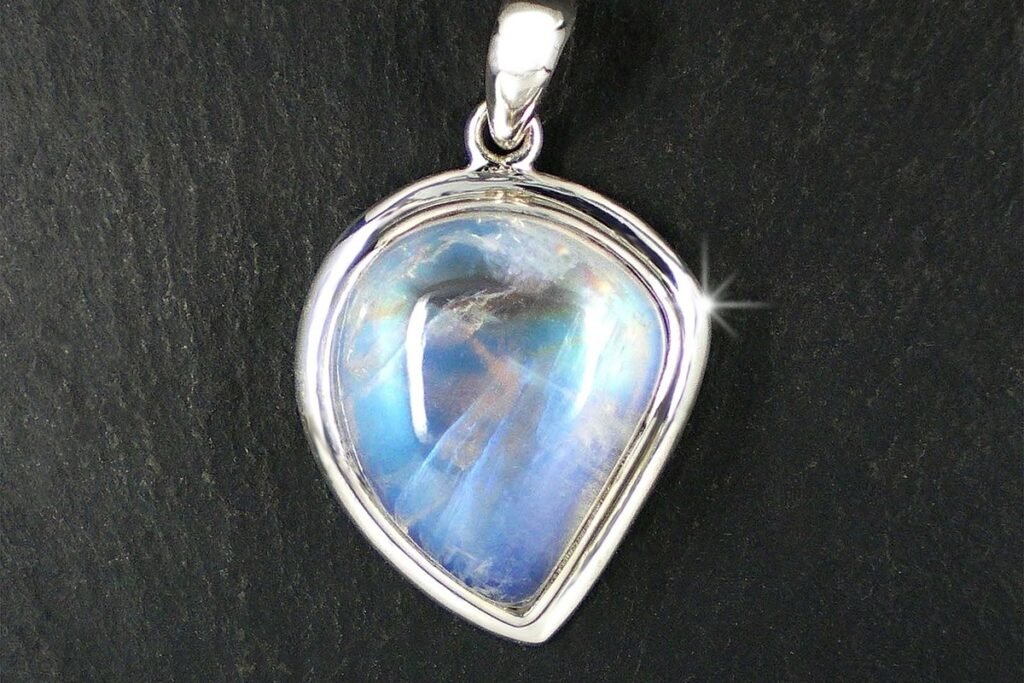
June birthday celebrants have the moonstone as their birthstone alongside the pearl. When shopping for moonstones, expect to see the milky white and opalescent variants of the stone. However, moonstones may also come in various shades of pink, gray, and even green.
Some moonstone collectors aim to find two rare types of moonstones. These are the colorless and the iridescent moonstone. Instead of a clear glass-like appearance, a colorless moonstone will have adularescence that creates a blue sheen.
The rarer iridescent moonstone will showcase a rainbow adularescence. This happens when the moonstone has more labradorite deposits in it. Even though the moonstone is colorless, the labradorite essentially separates the color white, breaking into the colors of the rainbow.
What is in a moonstone?
Moonstones come from the feldspar family of minerals. While there appears to be a very common feel to the stone, it actually incorporates a few more minerals.
Most moonstones contain potassium aluminum silicate. In some cases, the rare moonstone types have deposits of labradorite. For instance, the rainbow moonstone can be completely classified as a labradorite stone, depending on the deposits. However, these two differ in that the labradorite is a plagioclase feldspar while moonstone generally falls under the orthoclase feldspar. They differ in the mineral content: the former comprises calcium and sodium, while the latter is mostly potassium.
Where do moonstones come from?
Compared to other gemstones, the moonstone does not come from mechanized mines. Because moonstones come from deposits of feldspar, they are usually found in stream sediments.
Harvesters tend to focus on these streams, whereas other smaller quantities can be gathered from kaolinite clay that has developed over weathered feldspar deposits.
Where to find moonstones?
For those who want to learn more about where to find moonstones, the best place would be Sri Lanka. It remains the most renowned and crucial location to obtain quality moonstone. While some areas all over the world have deposits for gathering moonstones, other more known sources include Brazil, India, and Myanmar.
How durable are moonstones?
On the Mohs hardness scale, the moonstone only holds up to a 6.5 rating, making the moonstone one of the softest gemstones available. Its typical appearance requires two directions of cleavage, so impact with an object can easily break the moonstone.
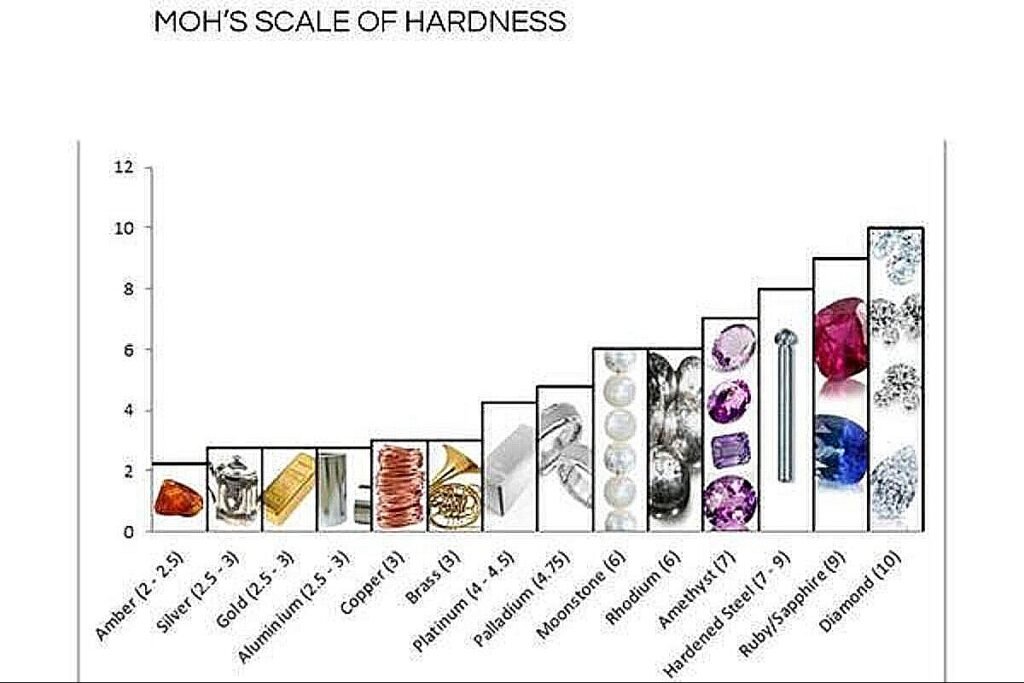
Most jewelers will not recommend a moonstone for very special rings, such as engagement or wedding bands. The everyday wear and tear can easily crack or scratch the stone’s surface. Since rings have the biggest likelihood for impacts, moonstones may not make for a very durable big-stoned ring. Moreover, settings that will enhance the moonstone’s look will require less protection, as part of its beauty lies in exposing its surface and showcasing its shape.
For those who want to have moonstone jewelry, your best bet would be to have them made as pendants or earrings. The one in this Pura Vida review is a great example of the use of moonstone for fine jewelry. This minimizes the damage since the areas you will wear it on are not typically exposed to too much movement, unlike your hands. Best to discuss with your jeweler on the kind of setting to use to further lessen possible damage or cleaving to the stone.
The faint glow of the moon
Moonstones possess a unique quality called adularescence. This gives the stone’s surface the glow that likens it to its namesake, the moon. This optical phenomenon gives the stone a glow that mimics the moon’s appearance.
When a gemstone like the moonstone has adularescence, the light moves over the stone in a smooth manner. Since the moonstone is made out of feldspar minerals, light gets reflected off the layers of this mineral. Instead of harsh refraction of light expected from brilliant gemstones, the adularescence diffuses the light and softens it to reflect in a more subdued manner to the observer.
Cutting a moonstone: Orienting to get the most adularescence
When cutting a moonstone cabochon, the most important step would be to orient the rough. This requires more than just cutting the stone into a perfect shape.
Expert moonstone cutters always aim to achieve maximum adularescence. To do this, they need to cleave parallel to the direction of the plane of adularescence. Some cleavage surfaces can achieve a stronger adularescence than others. Thus, it may even become a matter of cutting to find the best plane of adularescence.
Afterward, the cabochon’s flat base will have to be cut parallel to the chosen plane. There are varied shapes depending on the stone’s shape. The cabochon can be a high loaf-shape for oval moonstones or hemispherical for rounder shapes.
Meaning Behind The Moonstone
The moonstone regularly features in feng shui as one of the precious stones that activate the feminine powers. In spiritual and supernatural planes, the moon has always been associated with the feminine side.
Compared to the strong and dazzling power and light that the sun brings, the moon acts as a reflector of that light. It gives off a more subdued light that is still imbibed with energy to become a force in itself. It is a tranquil source of energy that not only activates an individual’s creative and intuitive capabilities but also facilitates healing.
When people ask, “What do moonstones symbolize?” it pertains to a potential medium for all of these capabilities to act within the body. The moonstone can be the grounding object to provide balance and attune the emotions to a less chaotic flow.
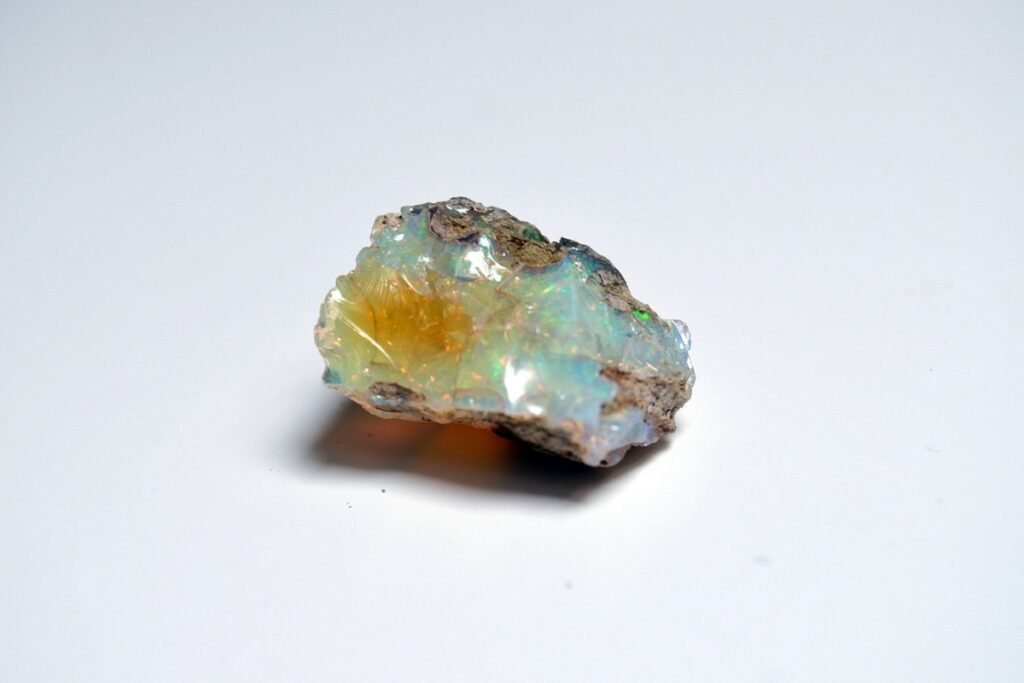
Moonstone in feng shui
Since the moonstone can open the gateway to one’s intuition, even feng shui experts recommend having a moonstone on one’s person. It can be a tumbled piece of jewelry in your pocket.
For those who prefer to wear jewelry, the moonstone can easily be set into different pieces. Since moonstones can come in bigger sizes, they can make for great fashionable pendants. They can also be set as the only stone for fashionable rings.
Some may even find moonstones as potential stone displays around the house. In feng shui, moonstones are typically placed near the bed to increase one’s receptivity and enhance balance.
The Right Price: How Much Is The Moonstone In The Market?
“Is moonstone expensive?” This is a common question for jewelry owners who want to add this gemstone to their collection. With the range of moonstones available, differing in quality and rarity, its price point can also have a vast range.
Adularescence contributes widely to the price point, as it can affect the overall color and appearance of the moonstone. Since the blue tinge remains highly coveted, go for a moonstone that has more blue on its surface.
Moonstone price can also be affected by inclusions. While micro inclusions may be seen as unique qualities, the price will drop the bigger and more tinted they become. Moonstones can be as affordable as $10, but the higher price tags of $1,000 may be the rare stones with very few or centipede inclusions.
Synthetic moonstones
Just like diamonds, the market already carries a few synthetic moonstones. For moonstones, their synthetic counterparts usually fall in the opalite category. This particular material is man-made and is very similar to the quality of glass.
Similar to moonstones, opalites can be carved into different shapes and sizes. They can even be transformed into beads and fashioned with different designs for fashionable jewelry.
Before you start doubting and asking, “Is Moonstone a real gem?” remember that synthetic counterparts will usually have a lower price tag. Ethical and responsible sellers should label their stones with opalite, especially when associating them with specific metaphysical properties.
When shopping for moonstones, the adularescence may be the most important facet to remember. Moonstones will have this ethereal glow, regardless of the body’s main color. However, opalite will remain clear, with no inclusions or moon-like surface. They may appear milky white with a few highlight colors. Put a stone against a darker background. If the glow changes from when it is placed against a lighter background, then it is most likely an opalite.
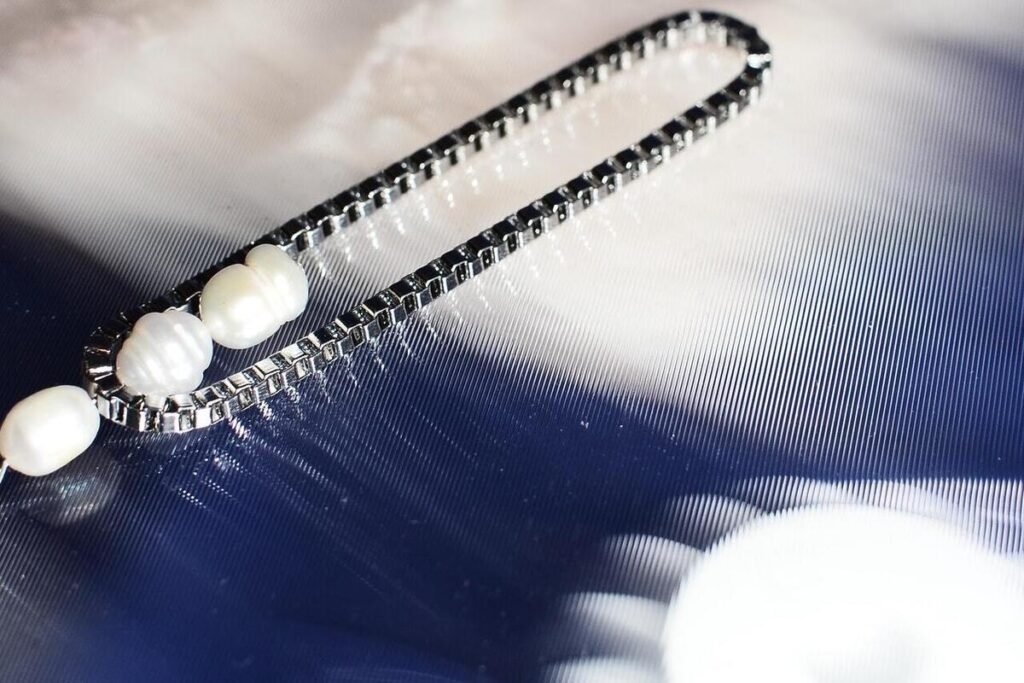
Benefits Of Wearing Moonstones
Wearing gemstones can be very intentional. For the wearer, this intention can be granted to the stone, and in turn, the hope is for the intention to manifest on the wearer. Given the metaphysical qualities that the moonstone embodies, there may be a few benefits that you can tap when you make it a part of your collection.
A traveler’s talisman
One of the moonstone benefits can grant safe travels for the wanderlust in you. Since the moonstone’s main power is in channeling balance and granting calmness, it will help ease emotional instability on trips. This instability may come in the form of stress, especially when in a new location that can disorient your grounding.
At the same time, as the stone of intuition, the moonstone enhances your intuitiveness. This helps not only in guiding you to where you are going. It can also keep you from heading straight into dangerous territory and keep good fortune and favor in your corner.
Regulating your regular visit
The moon’s link to a woman’s cycle makes the moonstone a good focal point to regulate one’s hormones during this period. It supposedly helps influence, regulate, and relieve pains during cycles. Some may even put a moonstone on a person during childbirth to help relieve the pain.
Connecting with the yin
While women may feel more connected to the moonstone, men can also harness its mystical qualities. Because the moonstone strongly connects with the yin or the feminine, men can explore their more feminine side to achieve better balance. This helps regulate emotions and lessen aggression, which is a masculine trait.
A magical stone for some romantic magic
The moonstone may rank second to the rose quartz when it comes to its association with love and magic. Some experts claim that the moonstone may be one’s guide towards true love, especially when the intention of the wearer runs parallel with the stone’s mystical connection.
Caring For Your Moonstone
Owning a moonstone may mean taking a few more steps to ensure that it does not cleave or lose its ethereal qualities. Here are a few things to remember when it comes to the moonstone.
Choose the right setting
A jewelry’s setting does not only serve the purpose of holding a gemstone to your jewelry piece. It also serves as the protective element that prevents cracking or chipping.
While the moonstone may seem like the perfect gemstone to experiment with intricate, antique-like settings, always consult with your jeweler on the best setting. This works best for made-to-order jewelry. Consider when and how you will wear the moonstone, especially for rings.
Check if your jeweler only offers cabochon shapes, like the one in this Ross Simons review. A recent trend in moonstone jewelry expands the cut to incorporate faceted shapes, which create more transparent varieties. These may also help in deciding what kind of setting can best protect your moonstone.
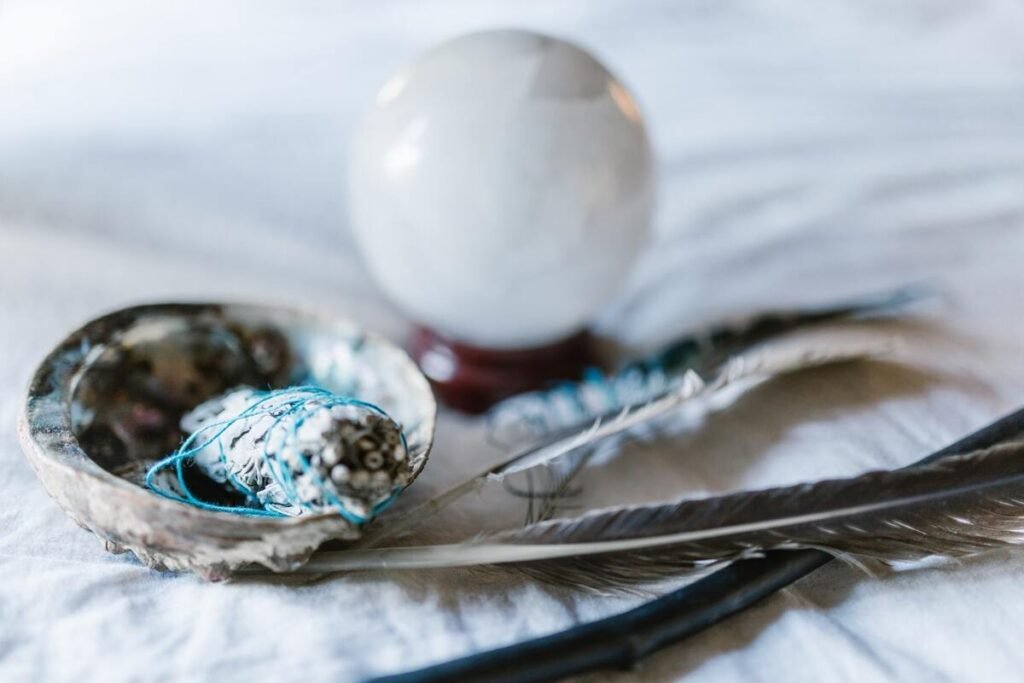
Clean your jewelry
Most gemstones have been imbibed with energy that is rooted in the gemstone. For the moonstone, cleansing it usually entails matching the timing with a full or a new moon.
According to The Spruce, this is the best time to soak the moonstone in sea salt overnight. Another way to cleanse the moonstone’s energy is to smudge it with sage or palo santo.
Reimagine and visualize your intention for your moonstone. Clear it of negative energy by visualizing the moonlight alongside your intention so that the crystal may be reimbued with your thoughts for the stone.
If you want to know more about pretty gems such as purple-colored stones, check out our post, “Precious Purple: Precious Gemstones To Include In Your Jewelry Collection.”

